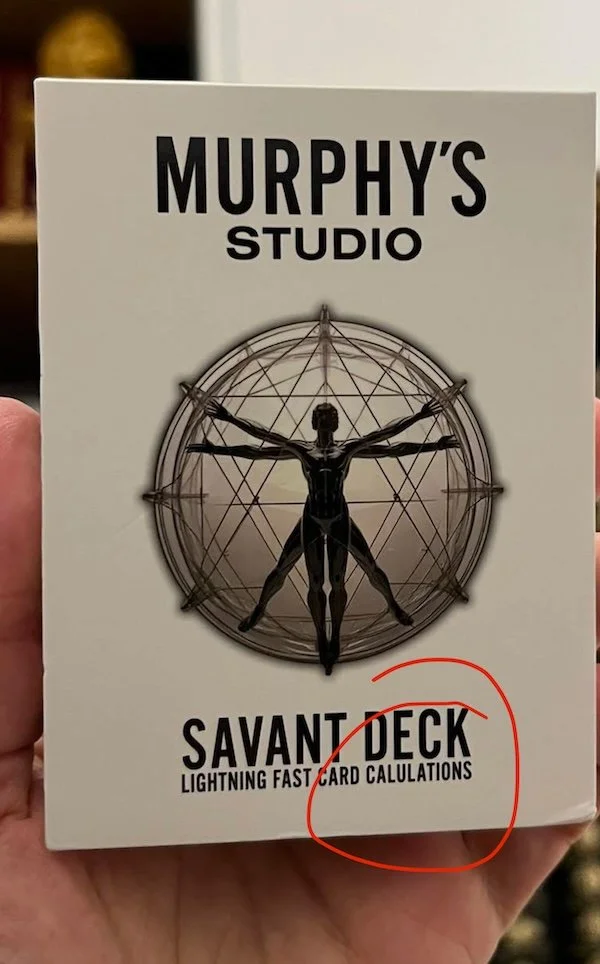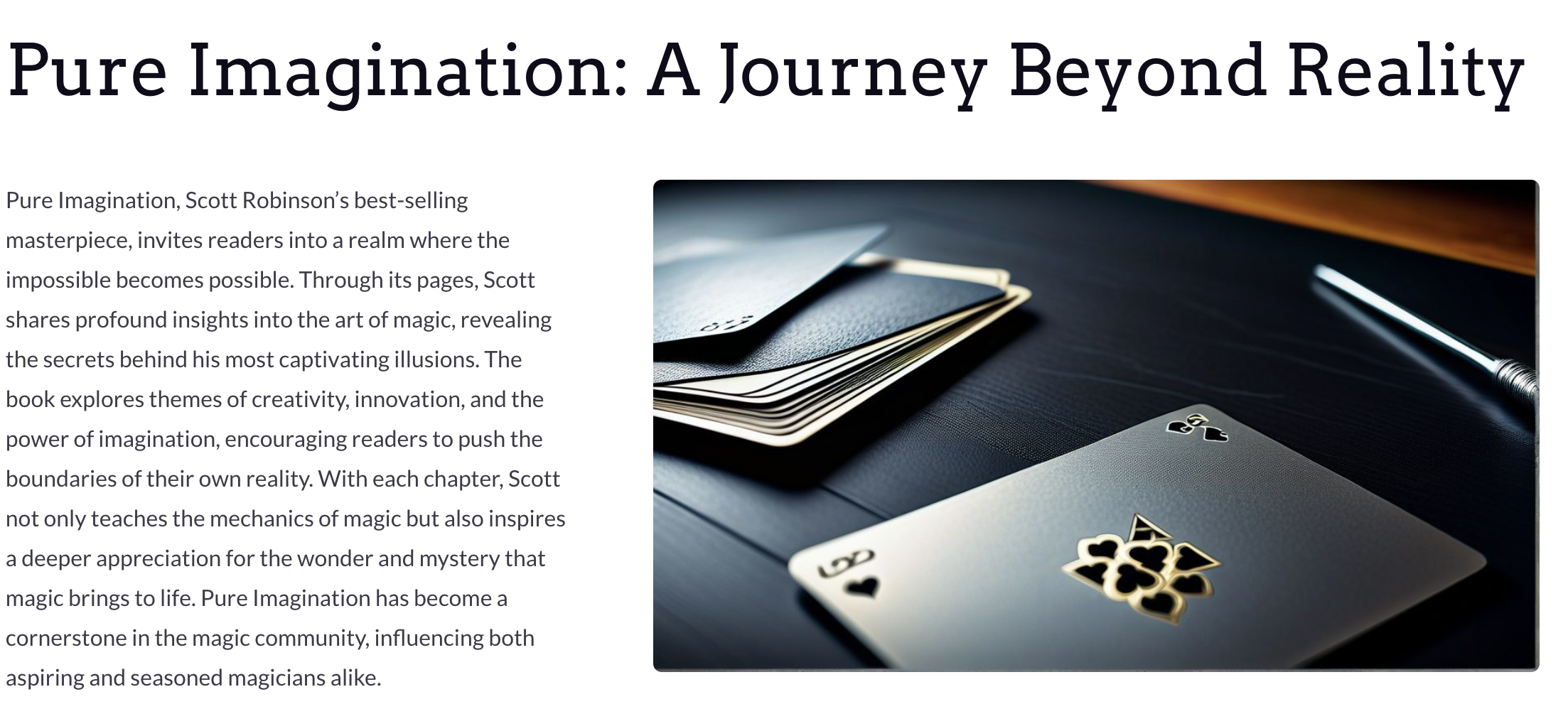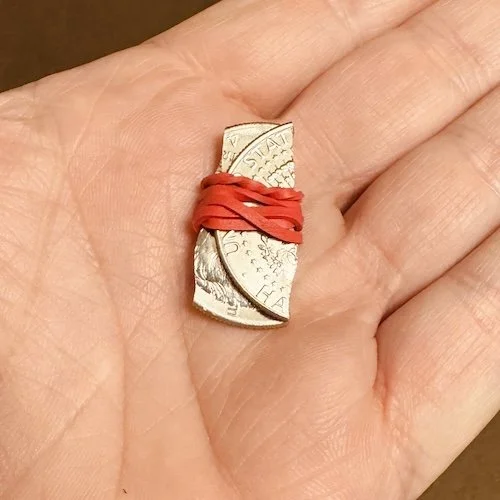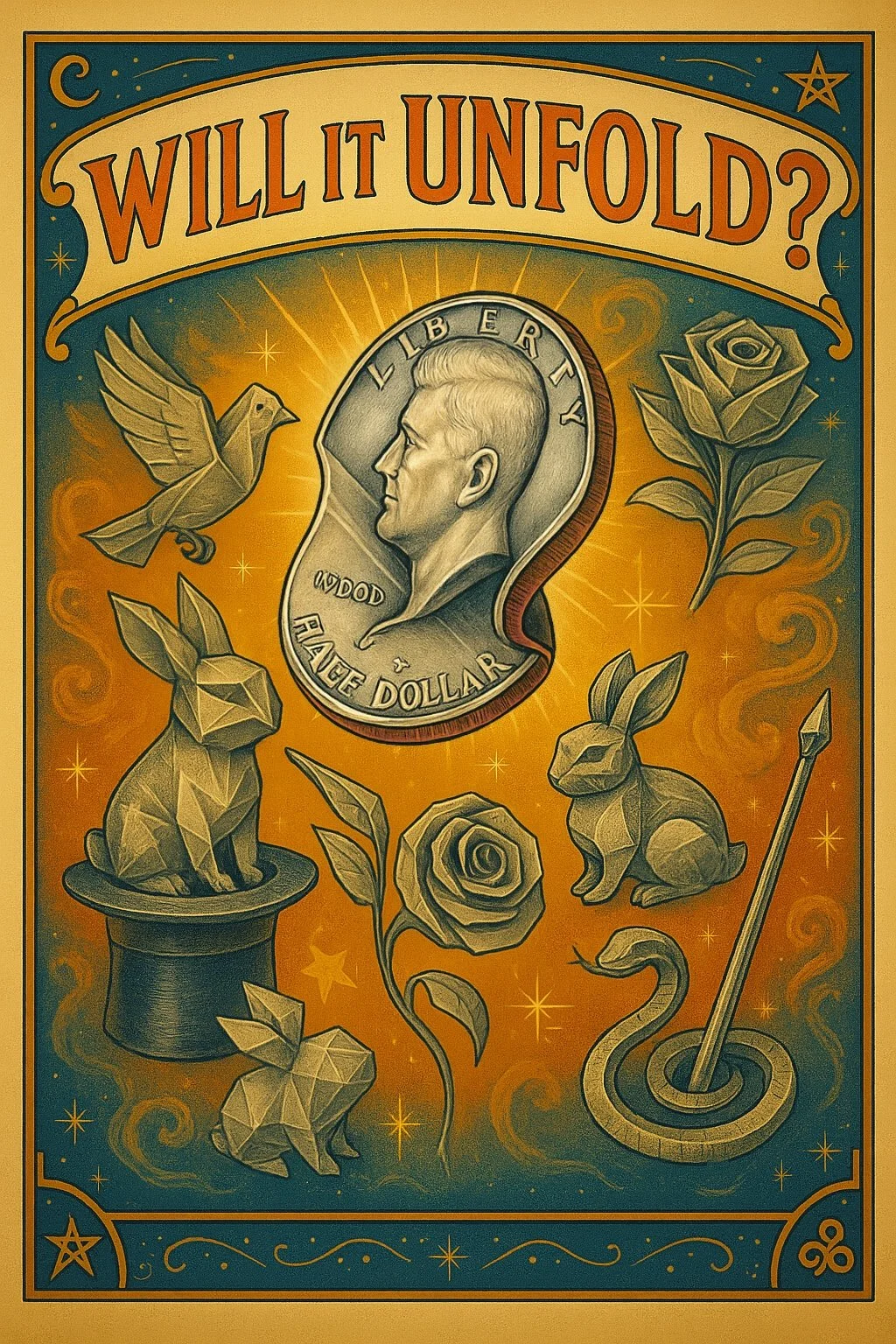Here’s a technique I came up with recently that’s surprisingly powerful for increasing the impact of an effect. It doesn’t rely on traditional sleight-of-hand or gimmicks—it’s purely conversational.
History
This approach evolved out of a trick in the Jerx App called Echo Sync. (Don’t worry, you don’t need the app to use this technique.)
Echo Sync has been one of my go-to impromptu tricks since Marc and I created it. It’s so simple to do and easy to get into in any situation, and it requires literally nothing on me other than my phone.
What I was looking for as a way to casually transition into the effect, instead of it being like, “I’m going to pull out my phone and record this,” which is a bit too abrupt for me.
So here’s what I started doing…
I would be sitting with my friend in a restaurant (for example) waiting for our food to come. Casually, I’d say, “Guess how many fingers I’m holding up”—with my hand under the table.
Three
“Nice. Okay, try again.”
Five
“Haha, yeah, good job. Hmmm… okay, one more time.”
One
At this point I act a little thrown.
“Wait… what the hell? Are you for real just guessing? Can you see something?”
I look under and around the table, checking to see if they’re peeking or if there’s a reflection.
“I’m legitimately confused. Hold on….”
Now I take out my phone and start recording the game—to catch it on video and see if they keep getting it right.
They go on to get it right four or five more times in a row. And now I have video proof.
Broadening the Idea
Originally, the only reason I was doing this was to come up with a more natural flow into the trick. Asking someone to guess how many fingers I’m holding up as a casual time-killer doesn’t feel out of place. My friends and I will play little games like this regularly enough that it doesn’t stand out as an odd moment. And then after the person has gotten a few right in a row, it makes total sense to pull out my camera and do it “on the record.”
But as I played with it more, I realized this structure could be applied to all kinds of mentalism effects—especially those in the Spectator as Mind Reader category.
Imagine we’re hanging outside, waiting for some steaks to grill. During a lull in the conversation, I say, “Hey, I’m thinking of a playing card. Try to guess it.”
You name the 4 of Hearts.
"Haha, crazy that's actually what I was thinking of. Wait, let's try again."
You name the Jack of Clubs. Now I'm genuinely surprised. "Wait... are you serious? How are you doing that?"
You laugh, maybe thinking I’m just messing around.
“No... hold on…."
I walk inside, grab a deck of cards, and come back out.
“Okay, I’m committed. I turned over one card in the deck. What do you think it is?”
You name the 9 of Diamonds.
I just shake my head and spread the deck showing that’s the card I reversed.
Benefits
1. Seamless Transitions
You’re not pulling out a phone or a deck of cards out of nowhere. You’re doing it as a response to something that already happened, making the moment feel more authentic.
2. Amplified Impossibility
It’s not that people will fully believe they got your thought-of card right on the first or second try. But when they later succeed under “stricter conditions,” those earlier moments get retroactively validated. In the case of the card effect, it elevates a 1-in-52 hit into a 1-in-140,000+ impossibility.
3. False Memory Boost
I can’t prove this, but my guess is that when people recall the moment later, they’ll blend the phantom hits with the real one. They’ll remember hitting the right card three times in a row, even if only one of them actually happened. And even if they don’t naturally do that, you can honestly frame it that way when recounting it:
“Remember that time you somehow named the card I was thinking of three times in a row?”
4. Natural Narrative Arc
The progression from casual mind games to tangible proof creates a satisfying narrative. You start with an idea, then the stakes escalate, and finally there's confirmation. That arc is much stronger and more natural than simply saying, “Let’s do a trick,” and going straight into the one perfect reveal.
5. Prop-Free Prep
This works perfectly with the Carefree Philosophy. You can initiate the effect with nothing but conversation. No need for a thumbwriter, Invisible Deck, or pocket index, or whatever. But when things start getting “too crazy,” you’re naturally compelled to grab a prop—cards, paper, Scrabble tiles, whatever. And in that moment, while going to get the physical objects you need, you set up for the real trick.
Another Example
Let’s say I have the Draw Cycle feature in the Jerx App set to reveal a drawing of a common jungle animal.
I can start by asking someone to guess what sea creature I’m thinking of. Then when that works, I ask them to think of a farm animal I’m thinking of. That one “hits” too.
Only then do I need to pull out my phone to show it’s legit and I ask them to guess the jungle animal I drew.
When they name it and I reveal the matching drawing, that lands much harder.
You can easily frame it as: “You named one of a couple dozen common sea creatures… then one of a couple dozen farm animals… and then nailed one of a couple dozen jungle animals. That’s, what, one in 10,000?”
But in reality, you were only ever set up to reveal one of, like, the six jungle animals people ever think of.





















